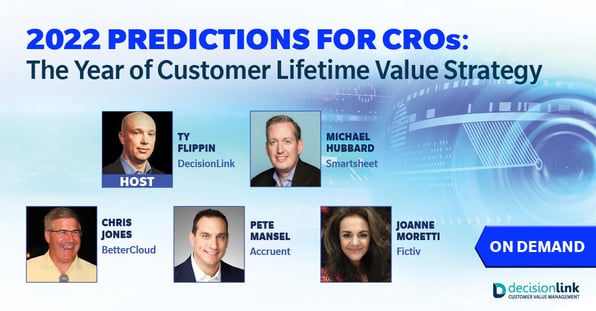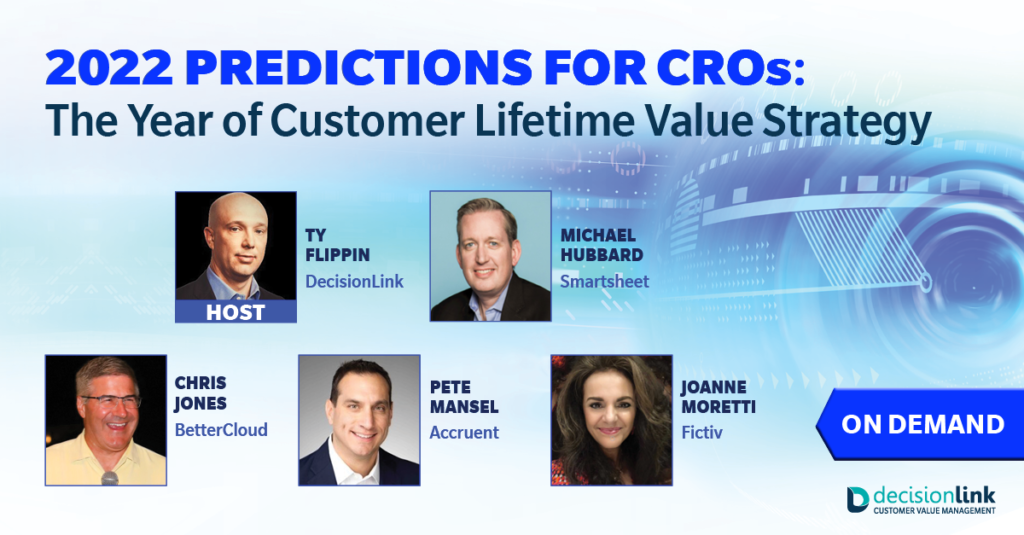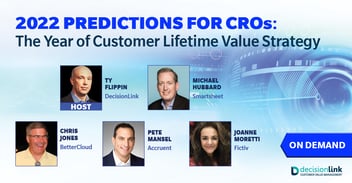Customer Lifetime Value: The SaaS North Star

In the digital age, there are metrics and KPIs that are tremendously important to any business. I could provide a list of them, but they are readily available on the Internet. In the SaaS business in particular, customer lifetime value is by far the most critical one. And the term itself contains the words that are essential in making sure a business is profitable and sustainable over the long run.
For those who are not clear on what customer lifetime value is, here is a quick refresher: “Customer lifetime value (CLV or often CLTV), lifetime customer value (LCV), or lifetime value (LTV) is a prognostication of the net profit contributed to the whole future relationship with a customer. The prediction model can have varying levels of sophistication and accuracy, ranging from a crude heuristic to the use of complex predictive analytics techniques.”1 Let me explain why this one metric should be the “North Star” for any SaaS company.
- Customer-centric: CLTV truly focuses on customer behaviors, purchasing patterns, quality of relationships, and true profitability. It is a representation of what the customer represents for your organization, how loyal they are, and how much more you can exchange with them.
- Value-centric: CLTV also connects the value you create and share with your customers to the value your organization gets from them. Your entire customer value proposition delivers value to your customers and your goal is to capture your fair share of it.
- Future-centric: CLTV provides the right balance between the past and the future. Your organization’s aims are increasing CLTV by delivering superior value propositions and greater outcomes.
- Outcome-focused: The more outcome you deliver to your customers, the more likely they are to stay with you for the long term, to renew contracts, and to increase their transactions with you.
- Data-centric: Lots of data are needed to conduct a deep analysis of CLTV and to develop a robust predictive model. It does require great systems and the ability to extract customer data.
5 Customer Lifetime Value Statistics 2
- Just a 5% increase in retention rates yields at least a 25% profit increase.
- New customers cost between 5 and 25x more than existing customers.
- You have a 60%-70% chance of converting an existing customer.
- Current customers spend on average about two-thirds more than new customers.
- Customer Lifetime Value is an important financial concept for 76% of companies.
10 WAYS TO USE CLTV
Focusing on CLTV can change the way your business operates and can also provide a tremendous boost in your go-to-market approach by:
- Developing customer segmentation based on CLTV: It is essential to know where customers are very profitable and provide long-term economic value. You can use CLTV and other metrics to further understand your customers and find the core profitable group. Other metrics can include quality and duration of the customer relationship (High/Low) or past LTV versus Future.
- Tracking your CLTV to CAC ratio: Once you have performed a CLV analysis on all your current customers, you will know how much it makes sense to invest on acquisition. You will also know which acquisition channels produce the highest value customers and can repeat the strategies you used to find them. You can set targets of LTCV vs CAC at various times of your organization’s journey.
- Securing future customer VIPs: Once you have a solid data profile of what characteristics your VIPs have, you can use predictive analytics to get a strong idea of which new customers will be future VIPs and focus on these customers with personalized campaigns and offers.
- Using CLTV as a predictor of value prop resilience: CLTV is a future projection of your customer profitability and your ability to extract pricing and value from them. Therefore, your value proposition and your offers must resist the test of time and reflect external dynamics. Is your product roadmap rich in the possibility to upsell and extend customer relationships?
- Evaluating your most effective and valuable marketing channels: CLTV can also change the way CROs think about sales enablement & marketing in terms of creating loyalty objectives or focusing spending on underutilized areas. Prioritize marketing channels to acquire the most valuable prospects.
- Thinking about short-term and long-term strategies and tactics: CLTV analysis helps CROs find balance in terms of short-term and long-term sales goals and demonstrate a better understanding of financial ROI. That includes the right balance of investments, the right pricing strategy, and a relentless focus on customer value management.
- Designing future-forward customer growth: The process of designing a partner matrix in the digital age is an essential component of a sound strategy. Growth comes from technology and product roadmap coupled with an aggressive customer success strategy.
- Embracing the right CLTV-related metrics: The most profitable customers can be selected for special retention efforts (duration of the relationship, loyalty levels, quality of relationship for examples). They can be grouped into segments based on their CLTV and the segments can then be profiled using various drivers of CLTV: relationship duration, future profitability, historical profits, the cost to serve, and share of wallet.
- Embracing an ROI mindset: CLV allows CROs to measure the monetary impact of sales & marketing campaigns, initiatives, and other activities. When you know what drives CLTV and reduce churn, you can be laser-focused on your marketing and sales enablement campaigns.
- Balancing your pricing strategy with CLTV: From trials to renewal, pricing strategies and tactics must reflect CLTV-based strategies. Pricing professionals need to price for long-term retention, contract renewal, upselling and cross-selling, and not just for short term acquisition. They also need to develop pricing models that match customer outcomes and generate important levels of pricing satisfaction.
“As a rule of thumb, expansion is advisable as soon as the estimated CLV exceeds the CAC by a multiple—even if profitability has not yet been reached. In practice, mature digital business models should display CLV-to-CAC ratios ranging between at least 2:1 and up to 8:1 or more. At this level, CLV can also be used as a metric to measure and improve the performance of organizational units.”3
HOW TECHNOLOGY CAN HELP
You cannot rely on simple software and manual processes to adopt a robust CLTV-based approach. Today’s marketers, data scientists, leaders, and other professionals now have a powerful tool to help them calculate and utilize customer lifetime value — a customer data platform (CDP). A CDP serves as a central hub for all your critical and relevant customer data, collecting it into individual profiles for each customer. A CDP is an excellent tool for calculating CLTV since it has all the key ingredients of the formula in one place. Some CDPs even offer CLTV as an out-of-the-box metric at a click of a button. At DecisionLink, we go a step further. We propose that SaaS companies should embrace a Customer Value Data Platform (CVDP) to connect all the relevant customer data, to all the customer value management data, and to other platforms such as ERP, CRM, sales enablement. The heart of CLTV is customer value for the customer and for the enterprise. ValueCloud® is the latest innovation in customer value management that can do that. Powerful customer value analytics can be connected and integrated with your CLTV analysis. Be bold — join the customer value management revolution. Watch On Demand!
- Wikipedia 2021, Customer lifetime value – Wikipedia
- How to Calculate and Optimize Customer Lifetime Value [Infographic] — Business 2 Community
- 2021 McKinsey: customer-lifetime-value-the-customer-compass.pdf (mckinsey.com)
GET TO KNOW OUR PANELISTS:

Ty Flippin
Head of GoValue Solutions at DecisionLink.

Michael Hubbard
SVP, Customer Success, Services, & Support, Smartsheet

Chris Jones
Head of Global Field Operations, BetterCloud

Pete Mansel
SVP, Sales (Americas), Accruent

Joanne Moretti
CRO, Fictiv
Bio

Dr. Stephan Liozu (www.stephanliozu.com) is the Founder of Value Innoruption Advisors (www.valueinnoruption.com), a consulting boutique specializing in industrial pricing, digital business, and value models, and value-based pricing. Stephan has 30 years of experience in the industrial and manufacturing sectors with companies like Owens Corning, Saint-Gobain, Freudenberg, and Thales. He holds a Ph.D. In Management from Case Western Reserve University, and has written several books, including “Dollarizing Differentiation Value” (2016) and “Value Mindset” (2017).

 ValueCloud
ValueCloud
.png?width=118&height=76&name=Rectangle%20(3).png) ValueCloud Ignite
ValueCloud Ignite
.png?width=92&height=92&name=Rectangle%20(4).png) Free Assessment
Free Assessment
.png?width=100&height=100&name=Rectangle%20(5).png) Watch a Demo
Watch a Demo
.png?width=82&height=96&name=Rectangle%20(6).png) Value Calculator
Value Calculator

.png?width=62&height=51&name=Group%2010%20(1).png) Marketing
Marketing
 Sales
Sales
 Customer Success
Customer Success
 Engage Prospects
Engage Prospects
 Win Deals Faster
Win Deals Faster
 Retain Customers
Retain Customers
.png?width=62&height=62&name=Rectangle%20(8).png) Adopt and Scale
Adopt and Scale
.png?width=54&height=54&name=Rectangle%20(9).png) Cybersecurity
Cybersecurity
 Healthcare
Healthcare
.png?width=54&height=54&name=Rectangle%20(10).png) IT & Software
IT & Software




